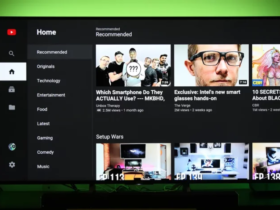In the dynamic landscape of educational institutions, clashes between students and authority figures are not uncommon. These confrontations often arise from differing perspectives on policies, decisions, or disciplinary actions. In this article, we delve into a specific scenario where Emma, a student, engages in a heated argument with Principal Figgins. Through this lens, we’ll explore the dynamics of student advocacy, the role of authority figures, and strategies for constructive resolution.
Understanding the Context
Emma’s argument with Principal Figgins didn’t occur in a vacuum. It’s essential to understand the context leading up to this confrontation. Perhaps Emma felt unfairly targeted by disciplinary actions, or maybe there were systemic issues within the school that needed addressing. Regardless, tensions escalated, culminating in a heated exchange between the student and the principal.
The Importance of Student Advocacy
Student advocacy plays a crucial role in fostering a healthy and inclusive educational environment. It empowers students to voice their concerns, challenge injustices, and actively participate in shaping their learning experiences. However, advocating for change can sometimes clash with established authority figures, as seen in Emma’s altercation with Principal Figgins.
Challenges in Communication
Effective communication is key to resolving conflicts amicably. However, in the heat of the moment, emotions can run high, leading to misunderstandings and escalation. Emma’s argument with Principal Figgins likely involved miscommunication or a failure to empathize with each other’s perspectives. Recognizing and addressing these communication barriers is essential for reaching a resolution.
The Role of Authority Figures
Principal Figgins, as the head of the school, holds significant power and responsibility. Their decisions and actions shape the school’s culture and affect students’ experiences. In Emma’s case, Principal Figgins’ response to her concerns could either exacerbate or alleviate the situation. It’s crucial for authority figures to listen actively, consider student perspectives, and approach conflicts with empathy and fairness.
Strategies for Constructive Resolution
Resolving conflicts like Emma’s argument with Principal Figgins requires a thoughtful and proactive approach. Here are some strategies that educational institutions can employ:
- Active Listening: Both parties must actively listen to each other’s concerns without interruptions or judgments. This fosters mutual understanding and paves the way for productive dialogue.
- Empathy and Respect: Empathy is key to bridging the gap between conflicting parties. Principal Figgins should strive to understand Emma’s perspective and demonstrate respect for her feelings and experiences.
- Seeking Common Ground: Identifying common goals or interests can help find common ground for compromise. Emma and Principal Figgins may have shared objectives, such as ensuring a safe and inclusive learning environment.
- Mediation and Facilitation: In cases where direct communication proves challenging, mediation or facilitation by a neutral third party can help facilitate constructive dialogue and resolution.
- Implementing Fair Policies: Educational institutions should have clear and equitable policies in place to address student grievances and disciplinary matters. These policies should be transparent, accessible, and applied consistently to all students.
Conclusion
Emma’s argument with Principal Figgins sheds light on the complexities of student advocacy and conflict resolution within educational institutions. By fostering open communication, empathy, and respect, schools can create environments where students feel empowered to voice their concerns and work collaboratively with authority figures to enact positive change. Ultimately, resolving conflicts requires a willingness to listen, understand, and seek common ground for the betterment of the entire school community.
Frequently Asked Questions (FAQs) About Student Advocacy and Conflict Resolution
- What is student advocacy?
- Student advocacy refers to the act of students voicing their concerns, advocating for change, and actively participating in decision-making processes within educational institutions. It involves speaking up for their rights, addressing issues of injustice or inequality, and working towards creating a more inclusive and supportive environment for all students.
- Why is student advocacy important?
- Student advocacy is important because it empowers students to take ownership of their education and school experiences. It fosters a sense of agency, encourages critical thinking and civic engagement, and promotes positive change within educational institutions. Additionally, student advocacy helps create a more democratic and student-centered learning environment where all voices are heard and respected.
- What are some common challenges in student advocacy?
- Some common challenges in student advocacy include resistance from authority figures or administration, lack of resources or support, fear of retaliation or stigma, and difficulty in mobilizing and organizing student efforts. Additionally, navigating complex institutional structures and policies can pose barriers to effective advocacy.



















